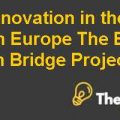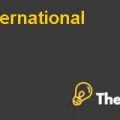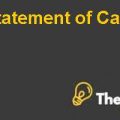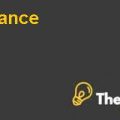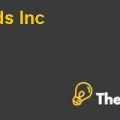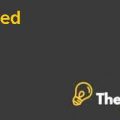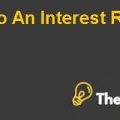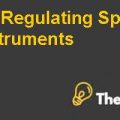
Introduction about the Company
The Hansson Private Label, Inc. is the leading organization in the field of manufacturing of personal care products such as soap, shampoo, mouthwash, shaving cream and sunscreen and all selling under the brand name Hansson Private Label Inc. (HPL) from the last 15 years. The HPL is following indirect selling tactics and which is done through the help of strong retailers from where consumers purchased products such as mass merchants (Wall Mart), club stores (Costco), supermarkets, (Kroger), and dollar stores (Dollar General). The Tucker Hansson is the owner of this business, has contributed a lot in the business and due to his own and team efforts the HPL’s leading in the industry of personal care products and having sound financial performances from 2003 to 2007 as shown in the case study. The financial historical analysis shows the growth is 8% in year 2004 and 2005, the growth in 2006 is 8.3%, and decline 1.3% in 2007 respectively, thus the growth predicts that the firm is consistently maintaining its standard revenue position and whereas the gross margins from 2003 to 2007 are showing significant positive result, and in the end its net income is also in positive percentage figures, this shows that company is somehow achieving targets and maintain its financial positions, but yet company can achieve maximum profit through percentage increase in sales per unit of production using effective selling tactics and giving incentive to the retailers to build partnership alliance with the retailers to achieve the maximum profits in future.
The firm has given projected estimated growth in selling price is at 2% annually, production costs of raw materials at 1%, manufacturing overheads at 3%, and maintenance expense at 3%, hourly average labor cost is at 3.5% and selling expenses kept at 7.8% for the projected financial forecasted from 2009 to 2018.
Finding of Case study
Facing four years of low growth and intense competition, HPL has the potential to expand production and increase profit margins, signing a contract for three years with the largest customer in the personal care product line.
The opportunity has its risks. The initial investment of $ 45 million, will be necessary and the Customer, which is already larger HPL, bounded only to a 3 year contract term. Moreover, the necessary investment will double HPL debit and significantly increase its financial strength. Consequently, any form of hardship client would seriously jeopardize the financial stability of HPL's.
Projected is forecasted to analyze the future prospective of Hansson Private Label, Inc the Analysis was performed based NPV, IRR and MIRR to identify that the firm can inflow earn positive cash inflows from investing in the firms for the future perspective and decision will be based on the final results.
HPL's Manufacturing Manager and CFO cash flow the following projected cash flow is mounted on the basis of the information available. Using the WACC of 9.38% associated with a company with a similar leverage, the NPV of the project is estimated at $104,649 with the positive result of IRR at 19.40% and MIRR is calculated at 8.1%. And sensitive analysis of the income statement and balance sheet is done. This analysis shows that the firm is optimistic to invest in the expansion of business to earn maximum profit and their calculation is shown in the excel worksheet attached with the file.
Case study’s Questions
1) Using assumptions made by Executive FP of Manufacturing, Robert Gates, Estimate the Project’s free cash flows till 2018 only. Are Gates’ projections realistic? If not, what changes might you incorporate?
Ans: The analysis is done purely on the calculation of projected free cash flow through working on the excel sheet and keeping the criteria suggested by the Robert Gates, the analysis shows that the only in the 2009 the future free cash flow is negative but in the rest of the years from 2010 to 2018 the free cash flow has positive inflow with the increasing trend analysis in the excel worksheet. Thus the Gates projections are realistically projected till 2018.
2) Analyze the fixed costs and variable costs per unit? Are the forecasts of these costs reasonable? Would you propose an additional analysis or recommendations?
Ans: The analysis shows that in the excel sheet that the fixed per unit is $1.77 till 2018 and because it do not change, however, there is a change in the units of production but it is fixed for the period. If the firm plans to get off its operations its plan, fixed cost will still be bear by the organization, and where as the variable cost is something else that it changes with the level of production increases and in the excel sheet analysis it is observed that variable cost increases with the increase of production and decreases with the decline of production...................
This is just a sample partial case solution. Please place the order on the website to order your own originally done case solution.

